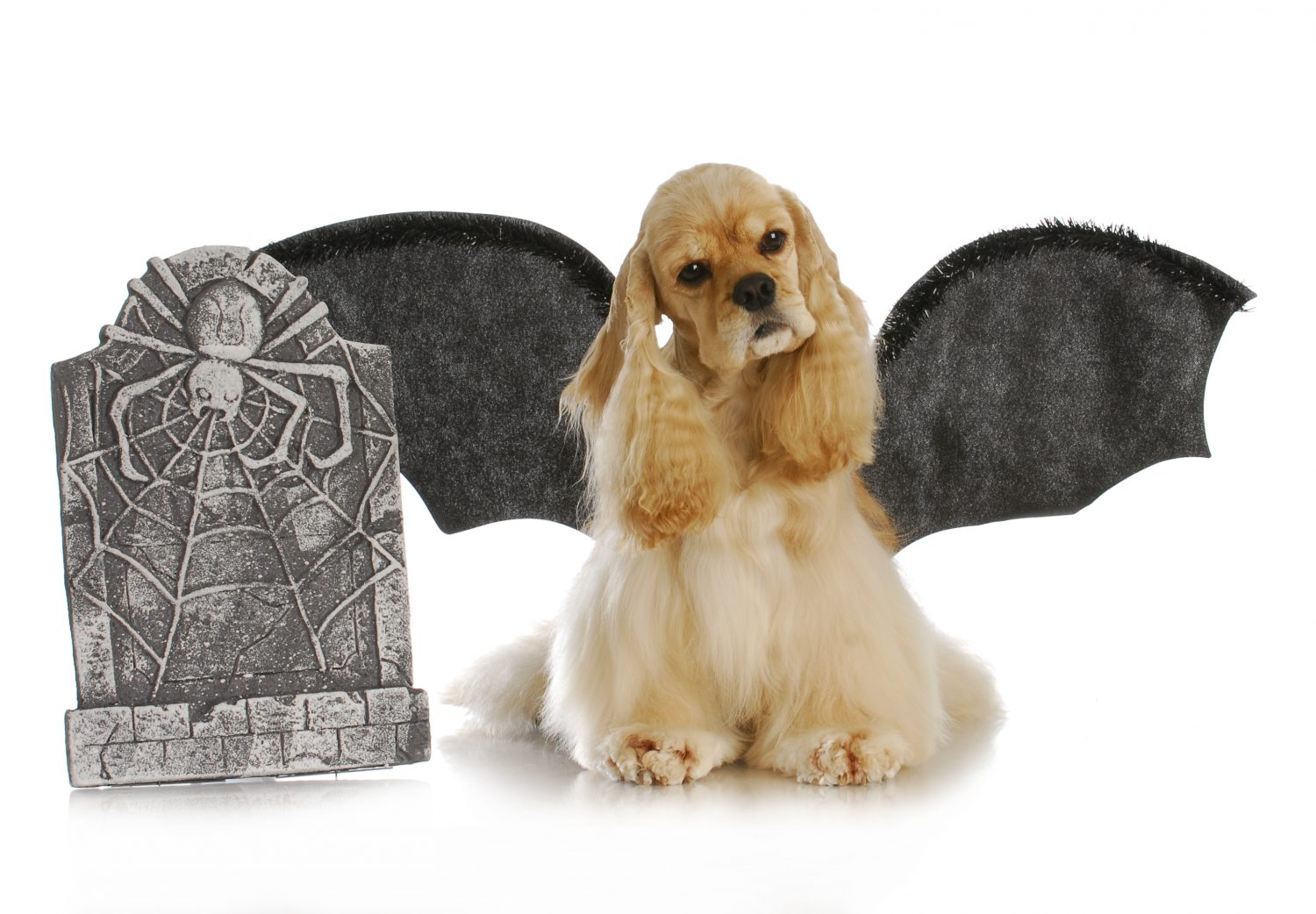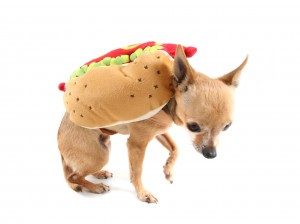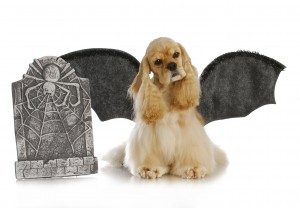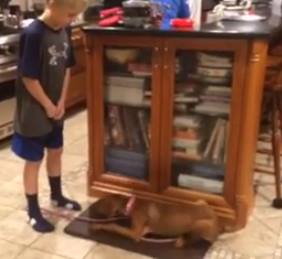Stop Barking at the Doorbell: A Halloween Training Activity
Your doorbell is going to ring all night long as the trick or treaters make their way around the neighborhood. What if we told you that you could use this as an opportunity to teach your dog not to bark his fool head off?
This process requires:
- One human to handle the trick or treaters
- One human to do the dog training
- A big baggie of over-the-top awesome treats.
- Chopped up meat and/or cheese works best!
- Prepare lots more than you think you will use.
- Skip feeding your dog dinner since they’re going to eat a lot!
- One hungry dog that likes to bark at the doorbell
- A book to read between doorbell rings
- Ear plugs (optional) :-)
Set up:
- Be sure your dog has had a walk so they’re a bit more relaxed and have done all their business.
- Before the trick or treaters arrive, get your dog and your over-the-top awesome treats in another room of the house and close the door.
- Your helper human will be handling the trick or treaters!
- Put your treat bag somewhere you can have quick access to it.
DING-DONG!
- As soon as the doorbell rings, grab a small handful of treats and feed feed feed.
- Put the treats away and go back to your book. Your dog may still be barking and that’s ok.
- Repeat the process for every doorbell ring.
- Do not give treats for any other reason so the dog understands doorbell = delicious.
What You Should Notice
- After a few repetitions, your dog should start to look at you expectantly when the doorbell rings.
- The barking will most likely start to fade away. (Key word: “start.” You’ll want to keep working on this beyond tonight to get the best results.
Troubleshooting
- “My dog won’t eat the treats!”
- Be sure you have the highest value treats possible. Normal training treats or biscuits won’t cut it. Real meat and/or cheese is best. You need something irresistible that your dog doesn’t get every day.
- If your dog turns away from you and won’t eat the treats, toss them on the floor near the dog. When the dog calms down a bit, they will eat them. The important thing is the connection that doorbell = food.
- “My dog eats and then starts barking again!”
- That’s fine. There are no other triggers present other than the doorbell, so once you’ve given the food, go back to your book and ignore the barking. Wait for the next trick or treater.
- “We don’t get that many trick or treaters.”
- This is why you have a helper human at the front door! Ask your helper human to ring the doorbell if there have been no trick or treaters for 5 minutes. Then you can get in more practice with your dog.
A Great Video
Check out Kikopup’s very thorough video that teaches how to desensitize and countercondition your dog to the arrival of guests.
Need Help?
We have a great resource page on Barking you can check out for more information. And you can always contact us with questions or sign up for a class or a free workshop to learn more about getting the best behavior out of your dog.





 If your dog does not deal well with changes in the environment, it’s best to skip dressing them up for Halloween. Here are some ideas to get cute pictures without dressing up your pup:
If your dog does not deal well with changes in the environment, it’s best to skip dressing them up for Halloween. Here are some ideas to get cute pictures without dressing up your pup:


